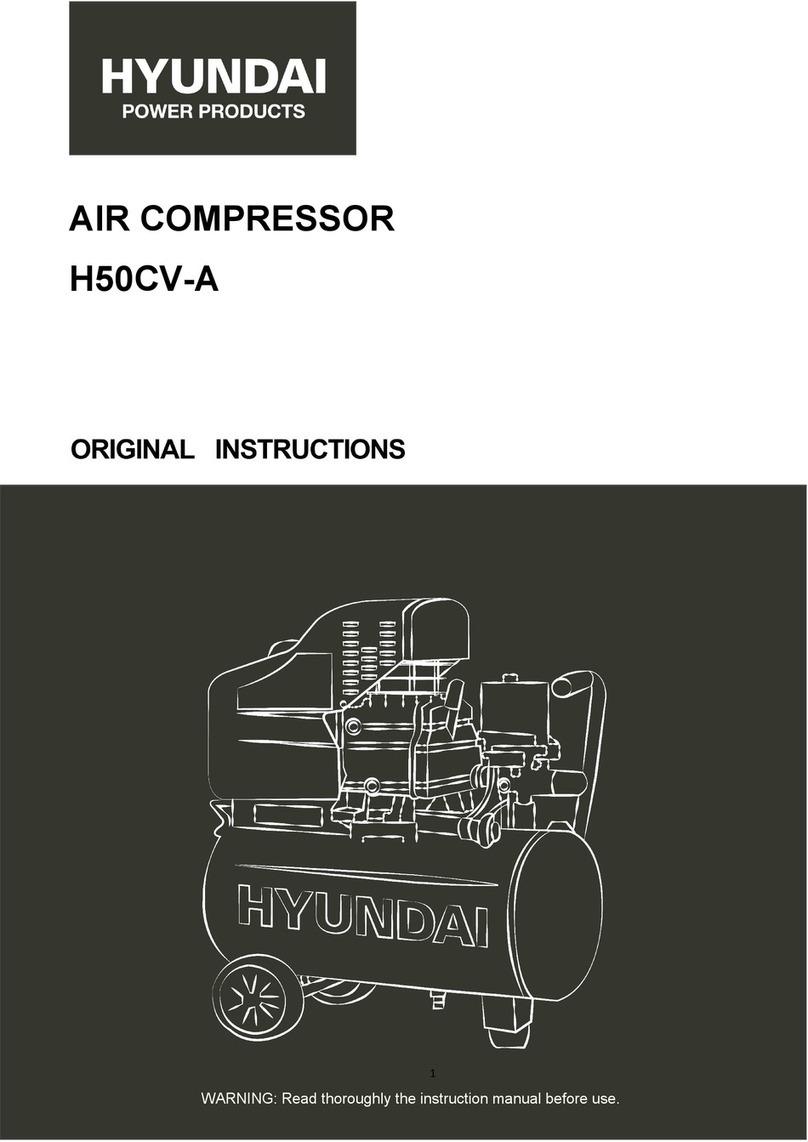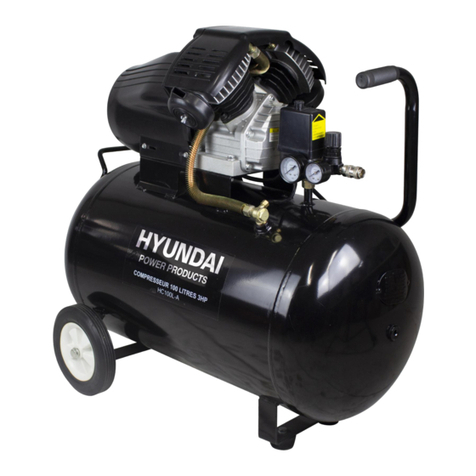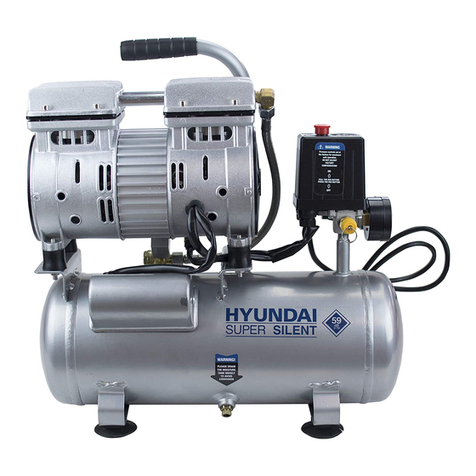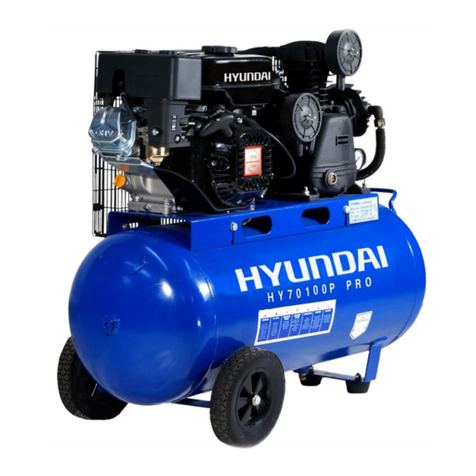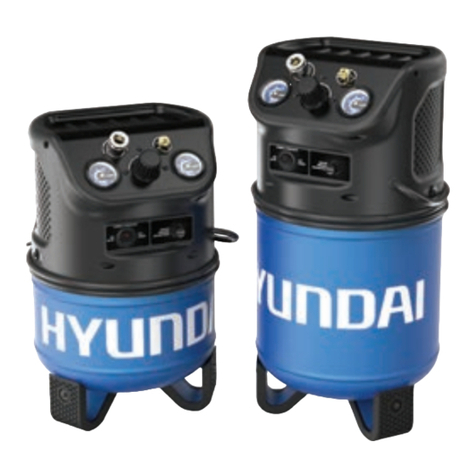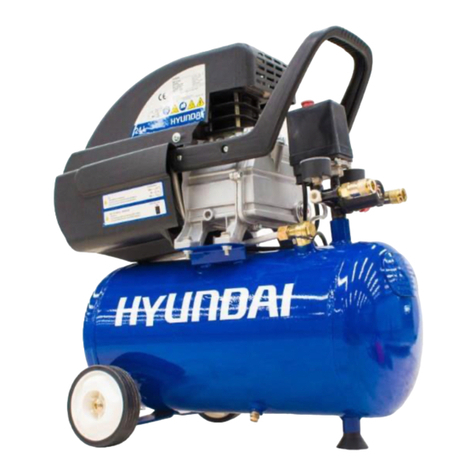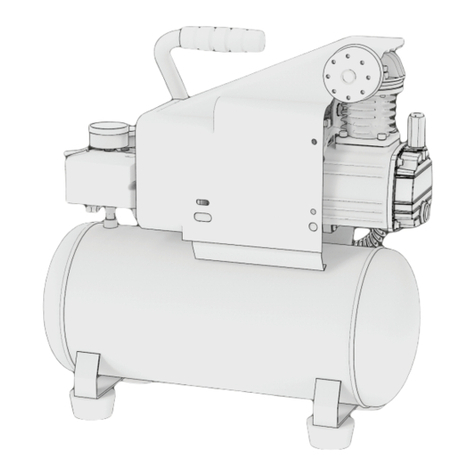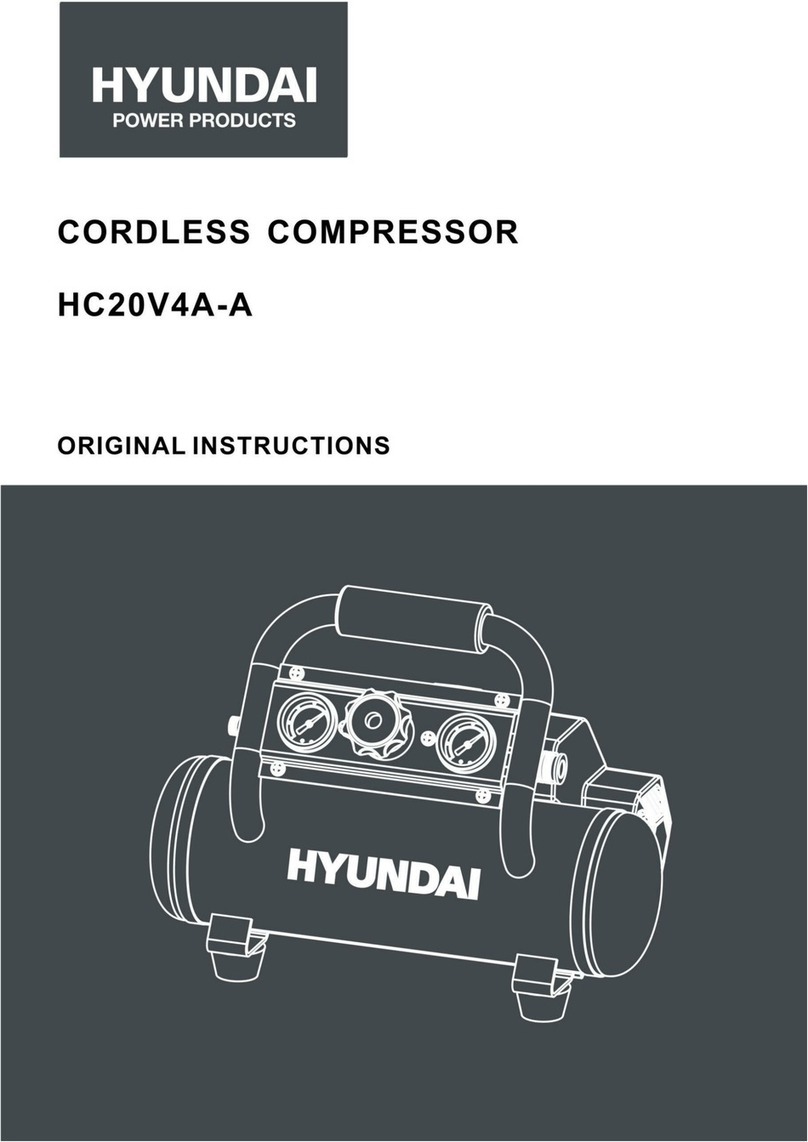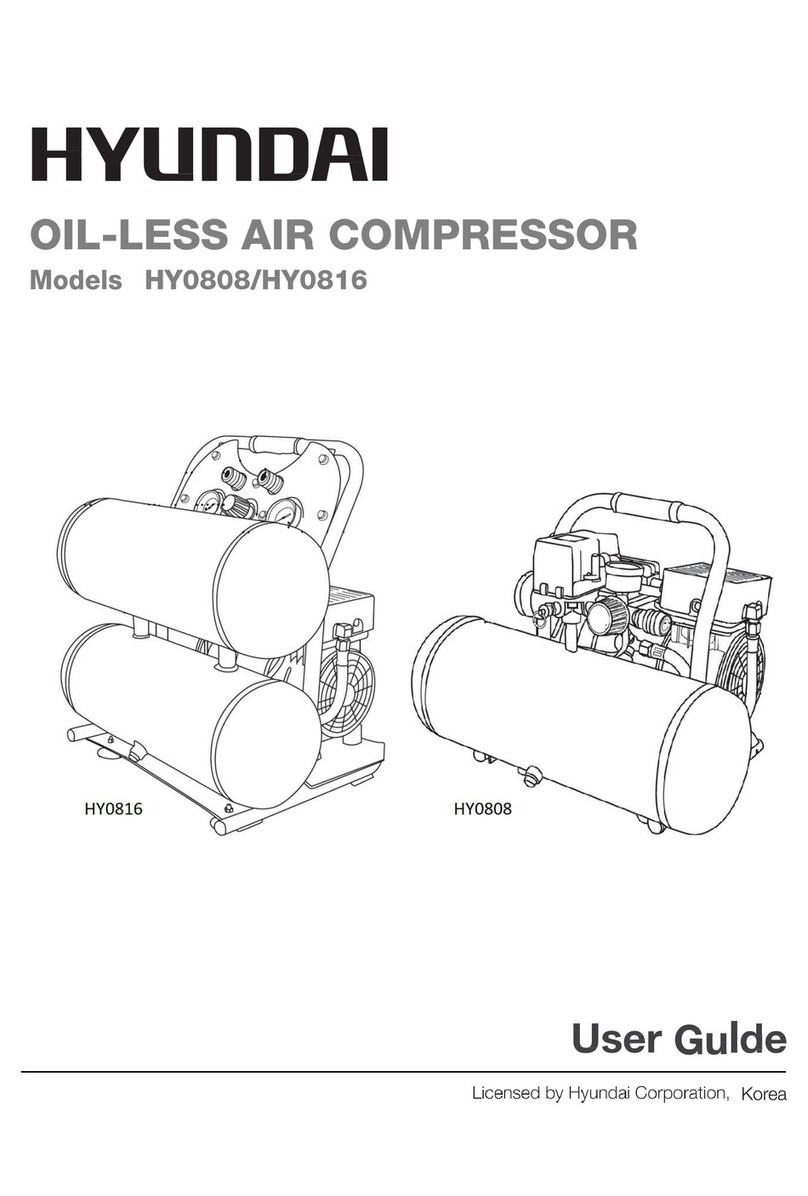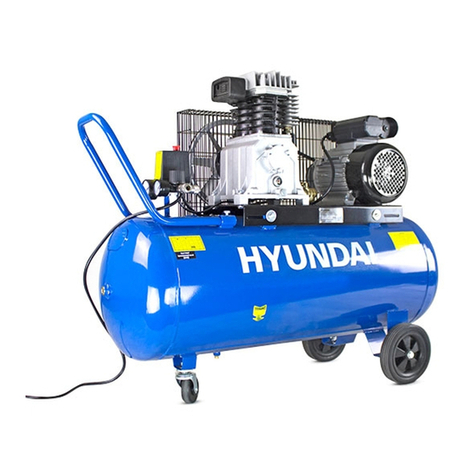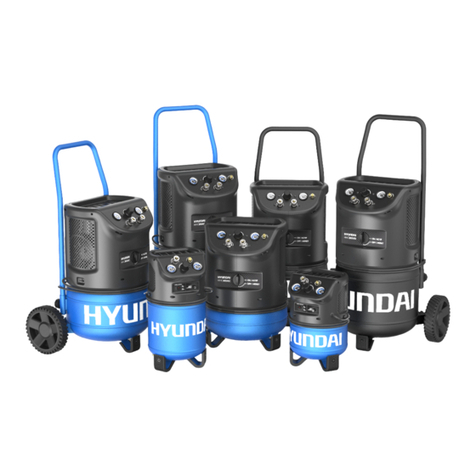
1. Introduction
Thank you for purchasing your HYUNDAI product. Please read the user's manual carefully
before operating the machine.
The HYUNDAI screw compressor is a two-shaft positive displacement rotating type air
compressor; with an alternate name of two-shaft air compressor. The compressor has
high and reliable operation characteristics, high gas transmission efficiency characteristics,
excellent dynamic balance characteristics, low noise and vibration as well as easy
operation and maintenance. It is of long performance life and environment protection.
Commonly used in industries of precision machinery and instruments, electronic products
and food, Chemical Fiber and Textile, aerospace application and chemistry, decorative
coating, medical pharmaceutical, traffic transportation and agriculture etc., Products have
a universally acknowledged development prospects.
1.1 Description on the compressor
The screw compressor manufactured by HYUNDAI is an achievement of several years’
research and development. The combination of these prerequisite conditions guarantees a
long performance life, high reliability and operational efficiency. The products meet all
requirements for environment protection.
1.2 Range of application
The machines and units of the series are manufactured according to mature technology
and recognized safety rules. The occurrence of the following, however, might cause threat
to the user or life and body of the third party, which might cause damage to the machines
and other material possessions
Incorrect range of application
Operation by unqualified personnel
Unreasonable modification or transform to the machines
Nonobservance to safety rules
As a result, all staff that has the right to operate, maintain or repair the machines has to
read and obey all safety rules. It can be confirmed by signature if necessary.
The following shall also be obeyed:
Relevant accident prevention rules
Acknowledged safety rules
National laws and regulations.
The machines and units of the series must be operated in perfect technical conditions and
must be operated compliance with the range of application and guideline specified in the
operation manual. The operators shall have strong safety awareness and fully recognize
the risks during the operation of the machines. Any functional breakdowns, especially
those that will threaten the safety, must be repaired in time (or ask others to repair it).
